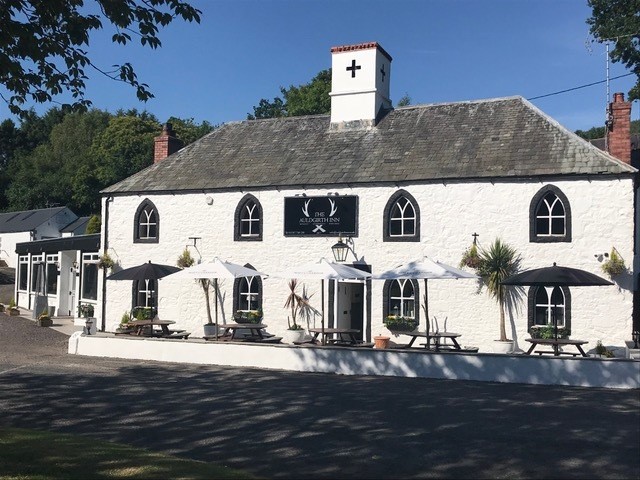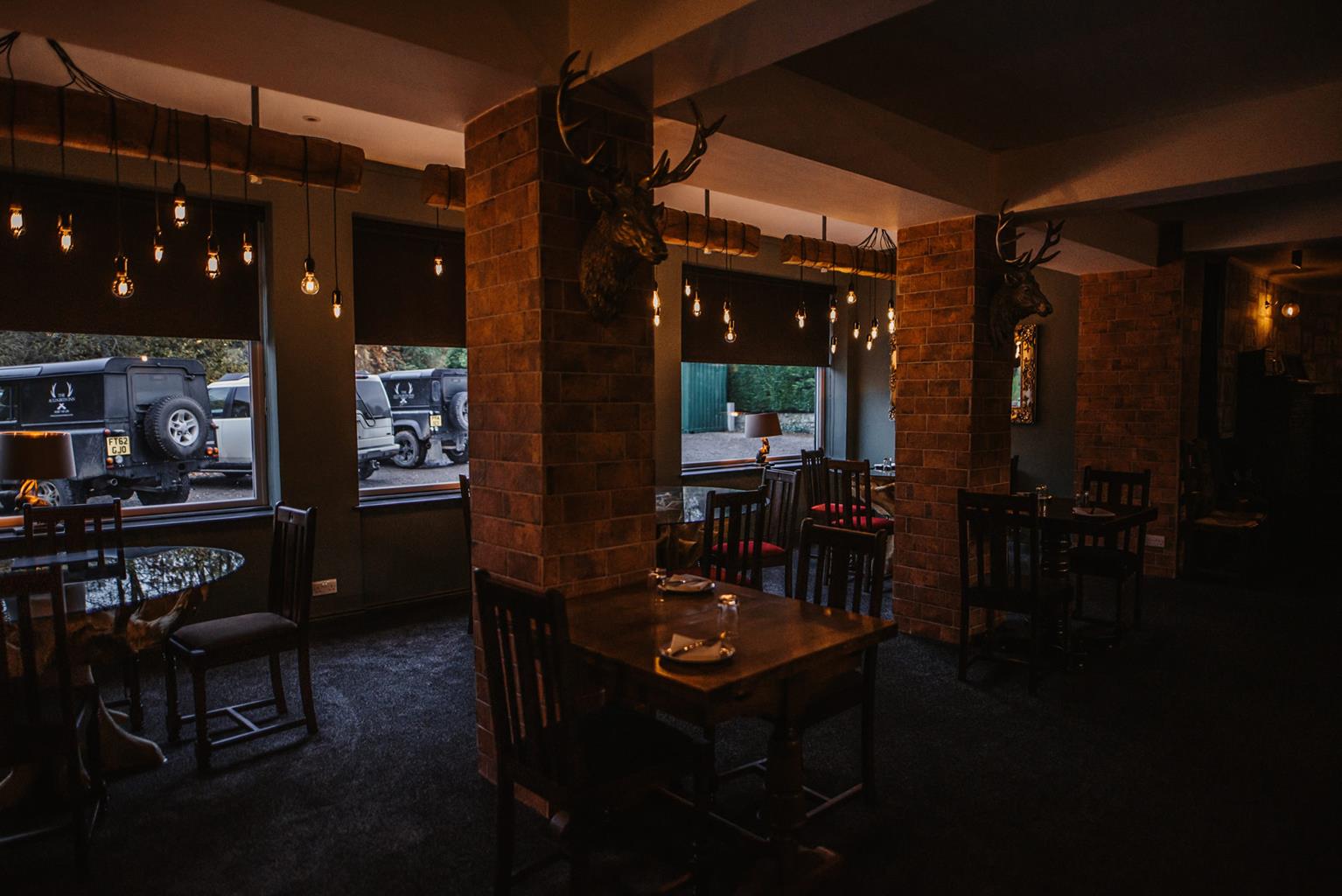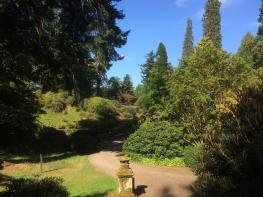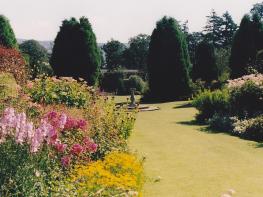A delightfully maturing family park, surrounded by the Southern Uplands and handily located…
Around the Devil's Beef Tub

4.5 miles (7.2kms)
About the walk
Dark, forbidding and dramatic (Sir Walter Scott once described it as a 'black, blackguard-looking abyss of a hole'), the hollow known as the Devil's Beef Tub has a history as turbulent as its name suggests. Over the years this deep, natural bowl has been used as a hiding place by thieves, formed a refuge for the persecuted and witnessed feats of daring – and even murder. Once known as the Corrie of Annan, it gained the name the Devil's Beef Tub in the 16th century when it was frequently used by the Johnstones, a local reiving (rustling) family, to hide stolen cattle after a raid. In reference to this it was also sometimes sardonically referred to as the Marquis of Annandale's Beef Stand.
The covenanting movement
The Tub was not only useful for sheltering stolen animals, however – it was also used as a hideout by persecuted Covenanters during Charles II's so-called 'Killing Time'. The origins of the covenanting movement went back to the time when bishops were imposed on the Church of Scotland by James VI. Years later his son, Charles I, who also believed in the divine right of kings, tried to interfere further in Scottish ecclesiastical affairs. This provoked such hostility that there was a riot in Edinburgh, resulting in the signing of the National Covenant in 1638. This document affirmed the authority of the Church of Scotland over the King in all spiritual matters and was circulated throughout Scotland, gaining particular support among Scots in the southwest.
Throughout the 17th century, religious fanaticism grew and Covenanters became a powerful force in Scotland. When Charles II, who had Roman Catholic sympathies, was restored to the throne he tried to suppress the movement. There were many battles, and prisoners were often brutally treated. Finding themselves outlawed, some ministers of the Church began holding illegal services, known as 'conventicles', in the open air. Persecution only fuelled resistance and during the years 1684 to around 1688, the 'Killing Time', hundreds of people were slaughtered by officers of the Crown. The most notorious of these was Graham of Claverhouse, later Viscount Dundee, known to his friends as 'Bonnie Dundee' but to his foes as 'Bloody Claverhouse'. There's a reminder of these violent times near the car park at the Devil's Beef Tub, where you can see a stone dedicated to John Hunter, a Covenanter who was shot on the hills here in 1685.
A rebel in the tub
This violent period in history came to an end when James II's son-in-law, William of Orange, came to the throne in 1689 – but was soon replaced in the following century by the violence of the Jacobite rebellion. In 1746 a prisoner from the Battle of Culloden, which had brought the rebellion to an end the previous year, was being marched to Carlisle for trial. He escaped his guards by leaping into the Devil's Beef Tub and disappearing in the swirling mist. Once again this great hollow had played its part in Scottish history.
Walk directions
Walk up the A701 to the forest gateway on the right. Don't take the wide gravel track, but rather a wooden gate on the right-hand side, to a small path to the left of a fence. Climb rails at a fence end, and head up the grassy slope of Annanhead Hill, keeping to the right of the plantation area to the trig point on the summit.
The small path continues around the flank of Peat Knowe, keeping the wall and fence to your left. Follow the path down the grassy slope of Annanhead Hill, keeping to the head of a gully, where your path meets the wall. Walk to the other side of the gully.
Past the gully head, turn right on a small path that runs just above, and to the left of, the grassy gully. As the slope drops away steeply, the path, called Strait Step, bends left and contours on a level line across the steep slope, below some small craggy outcrops. As the slope eases, the path slants down through bracken, heading towards the Coreknowe plantation at the valley end. Just before the plantation, you'll reach a metal gate leading into a field.
A bull occasionally grazes in this field, so if you need to avoid him, pass along above the field and climb an awkward fence into the plantation. Slant down right, under the trees, to a gate into the field with the tiny footbridge mentioned below. Otherwise, go through the grey gate and down beside a grassy bank. Turn left on a rough track to the bottom corner of the plantation. The track reaches a gate above a redbrick house. Through the gate, signed 'Moffat', head out into the field to a tiny footbridge, then bear right to pass to the left of the white buildings of Corehead farm. A fence on the right leads to a gate onto the farm's access track.
Follow the farm road along the valley bottom. The small area of undulating land on the right is the remains of an ancient settlement.
After a cattle grid, at the start of the buildings, turn up right through a gate signed 'footpath'. A stony track leads past a house and through a gate. Turn right, following the track as it runs above a stone wall. Eventually you'll reach the main A701. Cross over – take care as it's often busy – onto a rough track opposite.
The route passes over Ericstane Hill. Bear right and follow the track as it runs north round the far side of the hill. On open hill, the track is indistinct and boggy in places, with deep ruts half-hidden under rushes. Pass through a slight col to the left of the hill summit, to rejoin the A701. Turn right here to visit the Covenanter memorial, or turn left to return to the start of the walk.
Additional information
Farm tracks, small paths; narrow path across steep Beef Tub slope
Dramatic Beef Tub hollow and views of the Borderlands
Keep on lead when passing sheep and cattle
OS Explorer 330 Moffat & St Mary’s Loch
Lay-by just south of forest gateway
Lay-by just south of forest gateway
<p>notes</p>
WALKING IN SAFETY
Read our tips to look after yourself and the environment when following this walk.
Find out more
Also in the area
About the area
Discover Dumfries & Galloway
Dumfries and Galloway is a wonderfully undiscovered corner of Scotland – a romantic land of wooded glens, high hills and exposed moorland, haunted by its colourful past and the ghosts of those who fell in fierce and bloody battles. Heading west from Gretna Green you soon reach Dumfries, straddling the River Nith, where you may see red-breasted mergansers in summer.
The market town has strong associations with one of Scotland’s most famous sons, Robert Burns, who farmed nearby and returned to Dumfries towards the end of his life. You’ll find Burns-related visitor attractions around town, plus a portfolio of other sights ranging from ruined castles and abbeys to quirky museums. You can see for miles from the Camera Obscura, which occupies the top floor of the 18th-century windmill.
To the north lies a vast and endless landscape; mile upon mile of open moorland and afforested slopes stretching towards the Ayrshire coast. On the long haul to Stanraer, you’ll want to make regular stops and visit places like Gatehouse of Fleet, a delightful 18th-century planned town, and Creetown, a planned village on the estuary on the River Cree. Perfect for walking and fishing, Dumfries and Galloway seems gloriously untouched by 20th-century progress.
Nearby stays
Restaurants and Pubs
Nearby experiences
Recommended things to do
Why choose Rated Trips?
Your trusted guide to rated places across the UK
The best coverage
Discover more than 15,000 professionally rated places to stay, eat and visit from across the UK and Ireland.
Quality assured
Choose a place to stay safe in the knowledge that it has been expertly assessed by trained assessors.
Plan your next trip
Search by location or the type of place you're visiting to find your next ideal holiday experience.
Travel inspiration
Read our articles, city guides and recommended things to do for inspiration. We're here to help you explore the UK.













